Forums
- Forums
- Duggy's Reference Hangar
- USAAF / USN Library
- Lockheed T2V SeaStar
Lockheed T2V SeaStar
Post a reply
- Go to Previous topic
- Go to Next topic
- Go to Welcome
- Go to Introduce Yourself
- Go to General Discussion
- Go to Screenshots, Images and Videos
- Go to Off topic
- Go to Works in Progress
- Go to Skinning Tips / Tutorials
- Go to Skin Requests
- Go to IJAAF Library
- Go to Luftwaffe Library
- Go to RAF Library
- Go to USAAF / USN Library
- Go to Misc Library
- Go to The Ops Room
- Go to Made in Germany
- Go to Campaigns and Missions
- Go to Works in Progress
- Go to Juri's Air-Raid Shelter
- Go to Campaigns and Missions
- Go to Works in Progress
- Go to Skinpacks
- Go to External Projects Discussion
- Go to Books & Resources
-
13 years ago
 Main AdminStarting in 1949, the US Navy used the Lockheed T-33 for land-based jet aircraft training. The T-33 was a derivative of the P-80 fighter and was first named TO-2, then TV-2 in Navy service. However, the TV-2 was not suitable for operation from aircraft carriers. The persisting need for a carrier-compatible trainer led to a further, more advanced design development of the P-80/T-33 family, which came into being with the Lockheed designation L-245 and US Navy designation T2V.
Main AdminStarting in 1949, the US Navy used the Lockheed T-33 for land-based jet aircraft training. The T-33 was a derivative of the P-80 fighter and was first named TO-2, then TV-2 in Navy service. However, the TV-2 was not suitable for operation from aircraft carriers. The persisting need for a carrier-compatible trainer led to a further, more advanced design development of the P-80/T-33 family, which came into being with the Lockheed designation L-245 and US Navy designation T2V.
Compared to the TV-2, the T2V was almost totally re-engineered for carrier landings and at-sea operations with a redesigned tail, naval standard avionics, a strengthened undercarriage (with catapult fittings) and lower fuselage (with a retractable arrestor hook), and power-operated leading-edge flaps (to increase lift at low speeds) to allow carrier launches and recoveries, and an elevated rear (instructor's) seat for improved instructor vision, among other changes. Unlike other P-80 derivatives, the T2V could withstand the shock of landing on a pitching carrier deck and had a much higher ability to withstand sea water-related aircraft wear from higher humidity and salt exposure.
The only version of the T2V was initially designated T2V-1 when it entered service, but was redesignated T-1A SeaStar under the 1962 United States Tri-Service aircraft designation system, a name under which it would spend the majority of its career.
Crew: Two (student & instructor)
Length: 38 ft 6? in (11.75 m)
Wingspan: 42 ft 10 in (13.06 m)
Height: 13 ft 4 in (4.06 m)
Wing area: 240 ft? (22.3 m?)
Empty weight: 11,965 lb (5,427 kg)
Loaded weight: 15,500 lb (7,031 kg)
Max takeoff weight: 16,800 lb (7,636 kg)
Powerplant: 1 ? Allison J33-A-24/24A turbojet, 6,100 lbf (27.2 kN)
Performance
Maximum speed: 504 knots (580 mph, 933 km/h) at 35,000 ft (10,670 m)
Range: 843 nm (970 mi, 1,560 km)
Service ceiling: 40,000 ft (12,190 m)
Rate of climb: 6,330 ft/min (32 m/s)
Below TV-2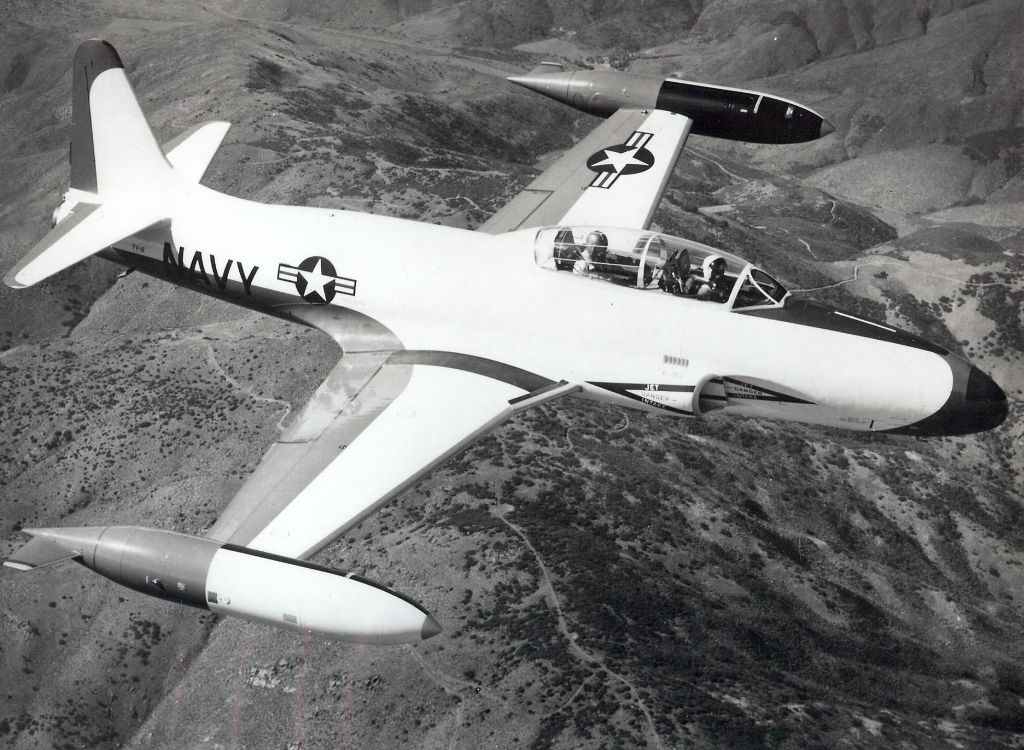
Below T2V-1/T-1A

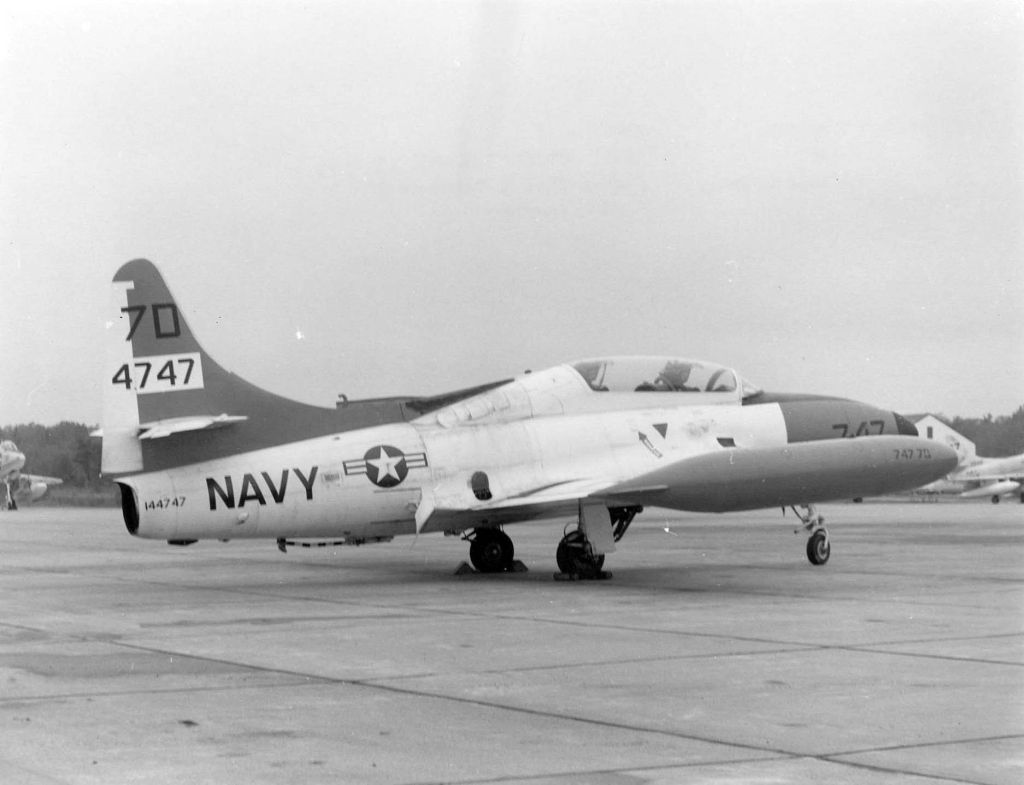



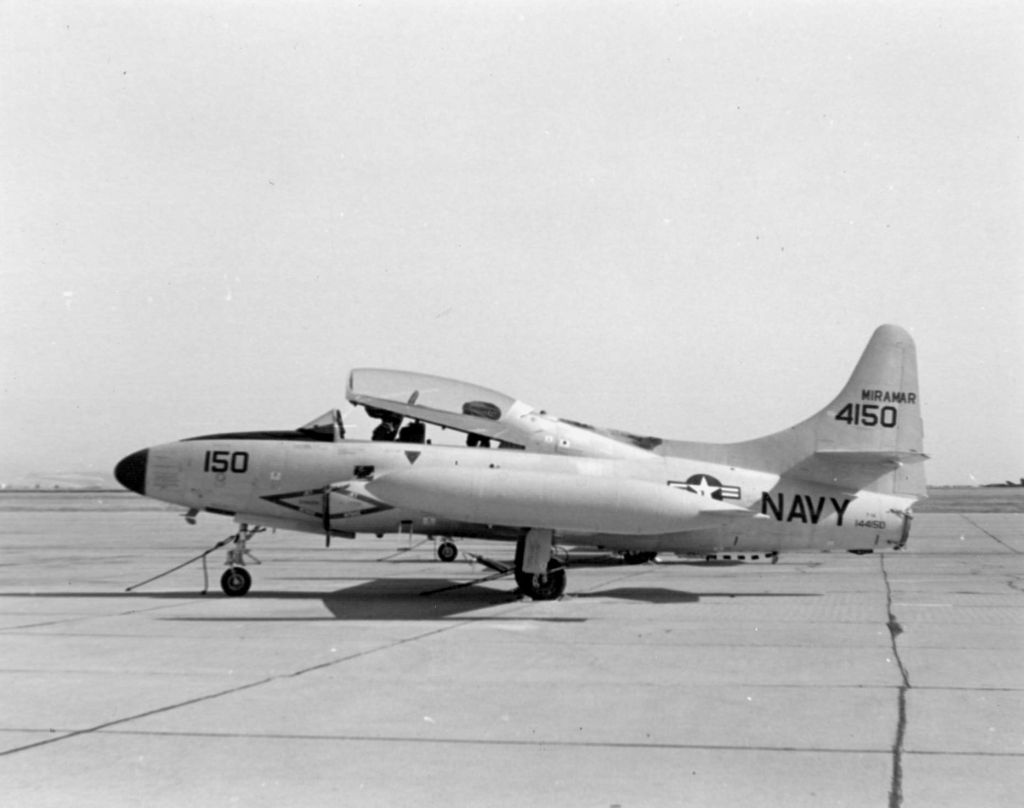
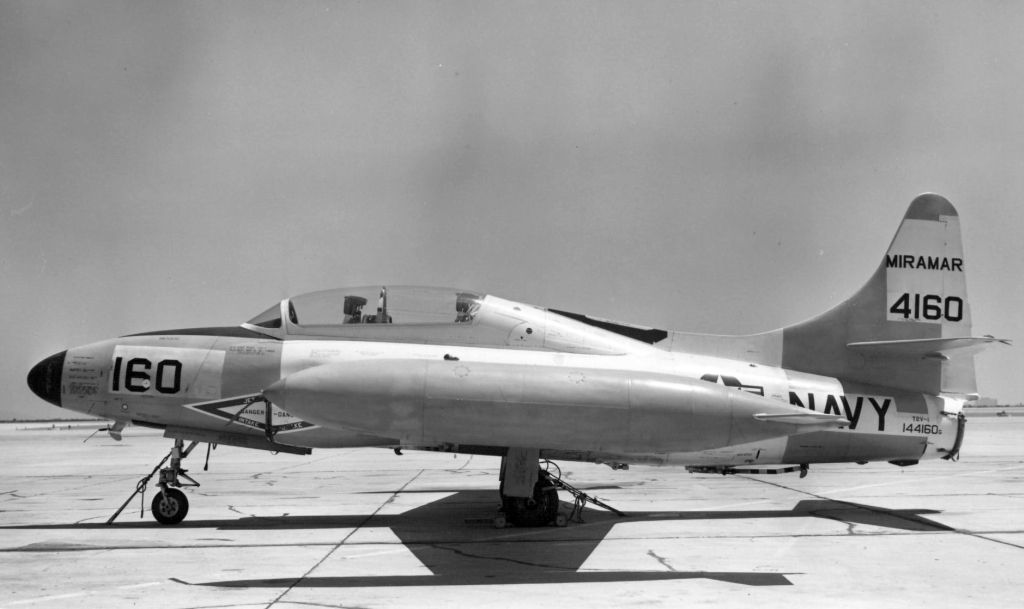







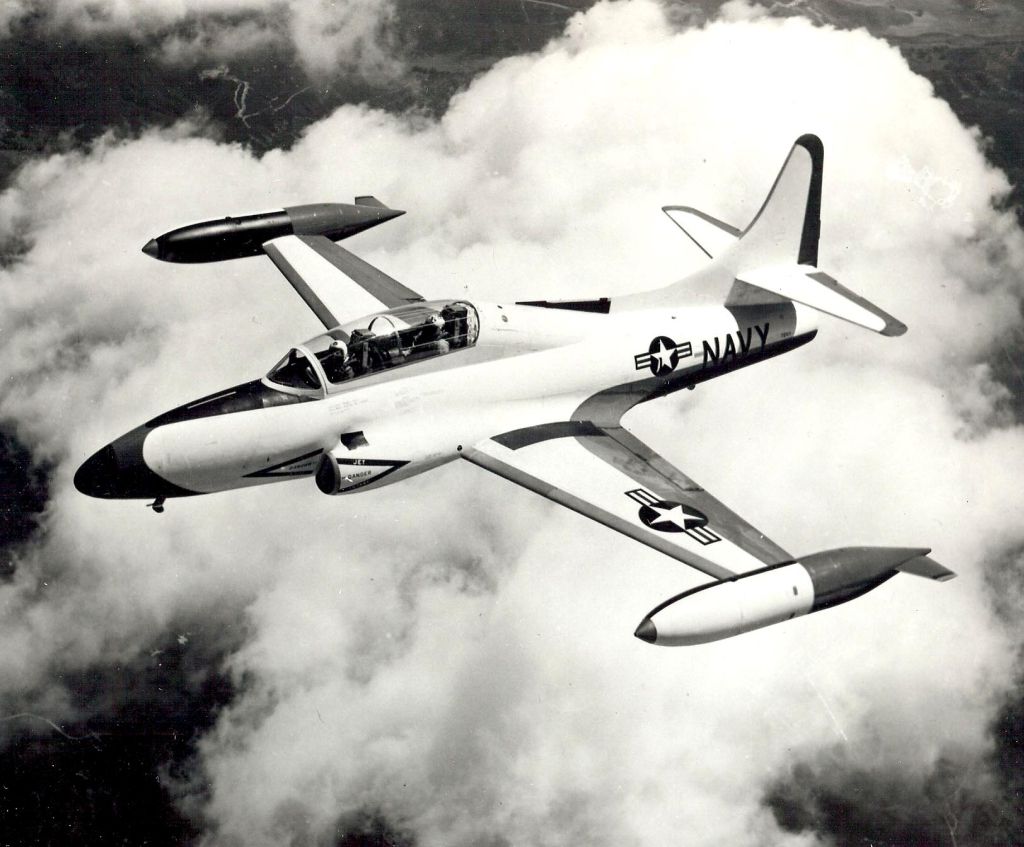



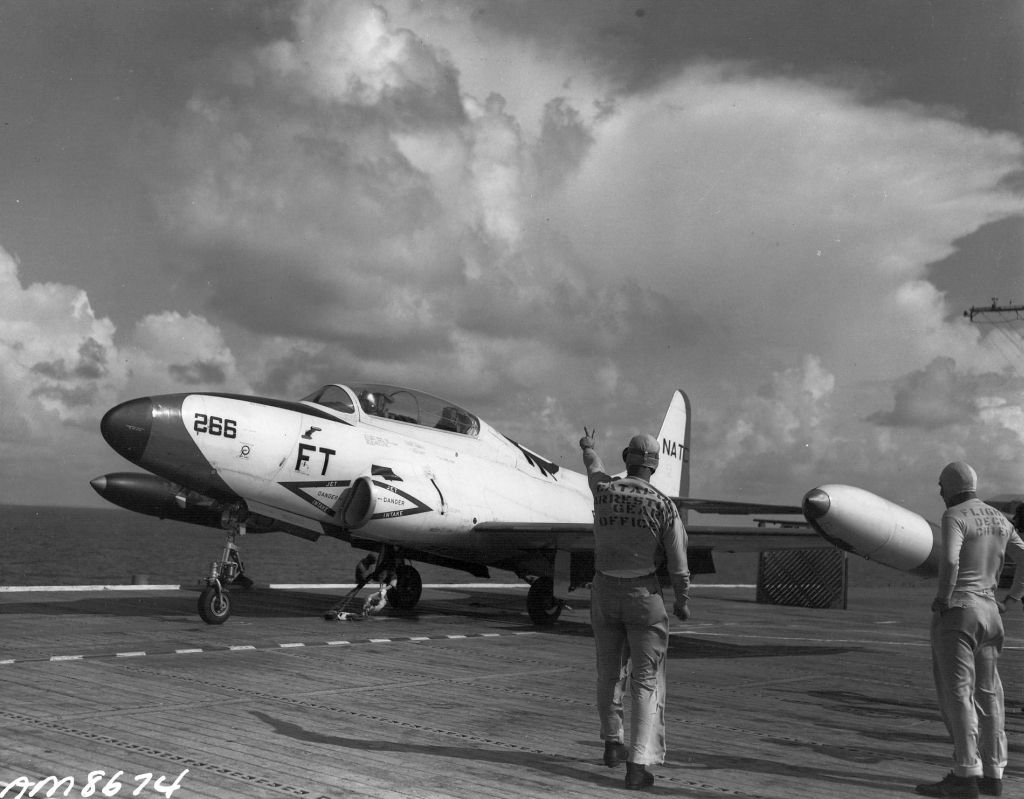





















Regards Duggy.
Post a reply
- Go to Previous topic
- Go to Next topic
- Go to Welcome
- Go to Introduce Yourself
- Go to General Discussion
- Go to Screenshots, Images and Videos
- Go to Off topic
- Go to Works in Progress
- Go to Skinning Tips / Tutorials
- Go to Skin Requests
- Go to IJAAF Library
- Go to Luftwaffe Library
- Go to RAF Library
- Go to USAAF / USN Library
- Go to Misc Library
- Go to The Ops Room
- Go to Made in Germany
- Go to Campaigns and Missions
- Go to Works in Progress
- Go to Juri's Air-Raid Shelter
- Go to Campaigns and Missions
- Go to Works in Progress
- Go to Skinpacks
- Go to External Projects Discussion
- Go to Books & Resources
